Вы планируете организовать трансфер или парк такси, но не уверены, что электронный тук-тук вместит достаточное количество людей. Выбор неправильной мощности означает снижение прибыли или неэффективное обслуживание.
Стандартный электрический тук-тук обычно перевозит трех пассажиров плюс водителя. Однако существует множество вариаций: модели доступны для четырех, шести или даже восьми пассажиров, в зависимости от конструкции, предполагаемого использования и местных правил. Выбор полностью зависит от потребностей вашего бизнеса.
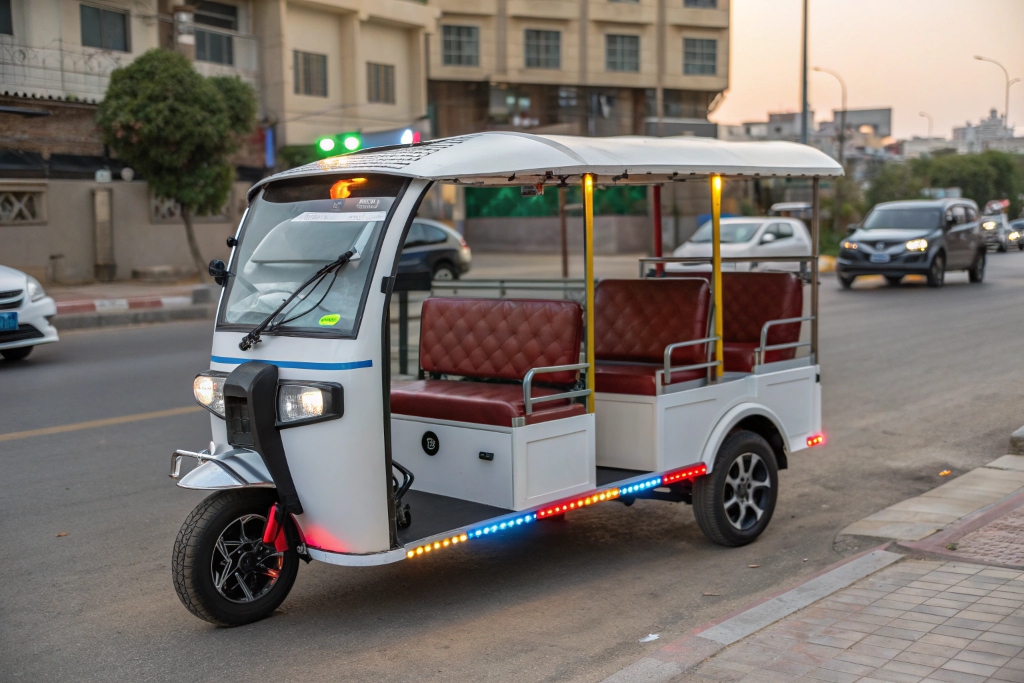
"How many people can it hold?" Это один из первых вопросов, которые мне задают клиенты. Это кажется простым, но ответ – это нечто большее, чем просто число. Как производитель, мы создаем автомобили для самых разных задач. Тук-тук для оживленного городского маршрута такси в Перу имеет другие потребности, чем шаттл для роскошного курорта в Дубае. количество мест влияет на все, начиная с стоимость автомобиля и стабильность ежедневного диапазона заряда батареи. Понимание этих вариантов является ключом к выбору правильного инструмента для вашего бизнеса. Давайте разберемся, что возможно.
Какова стандартная пассажировместимость электрического тук-тука?
Вы пытаетесь сравнить разные модели, но отправной точкой, похоже, является базовое количество пассажиров. Непонимание этого может привести к плохим финансовым прогнозам для вашего бизнеса такси или маршрутного транспорта.
Отраслевой стандарт для классического электрического тук-тука — три пассажира. Эти пассажиры сидят на единственной скамейке позади водителя. Такая компоновка обеспечивает наилучший баланс размера автомобиля, экономичности и маневренности для городских условий.
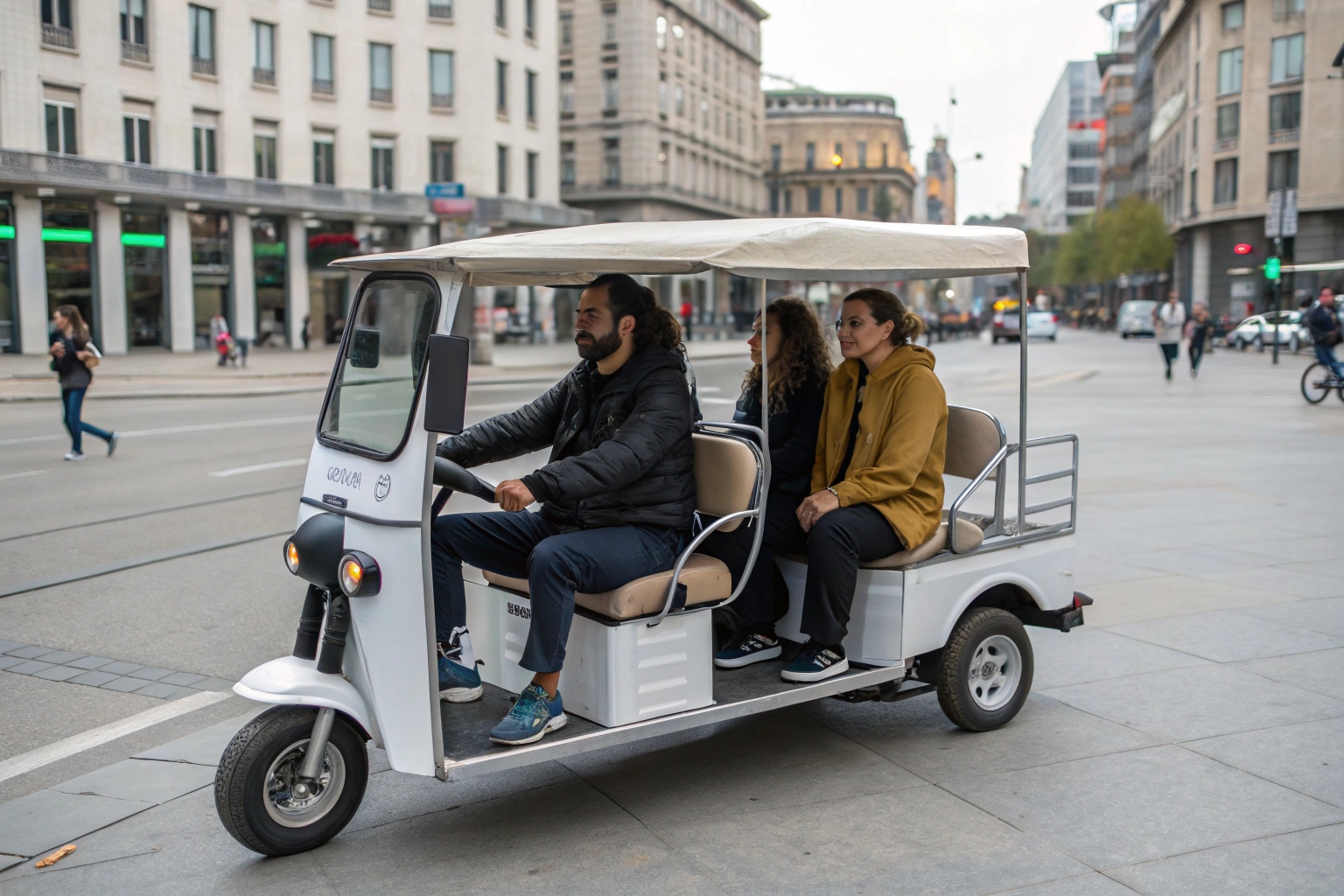
The трехместная конструкция, созданный на основе оригинального Bajaj RE, является наиболее распространенной конфигурацией, которую мы экспортируем. С нашего завода я могу сказать вам, что эта планировка популярна не зря. Это попадает в золотую середину. Для операторов такси в таких местах, как Нигерия или Боливия, это идеально. Автомобиль остается небольшим и достаточно маневренным, чтобы справляться с интенсивным движением транспорта, что является его большим преимуществом перед обычным автомобилем. Шасси рассчитано на то, чтобы без стресса выдержать вес водителя и трех взрослых, общая полезная нагрузка обычно составляет около 300 кг.
Эта стандартная конфигурация позволяет снизить производственные затраты, что делает автомобиль более доступным для индивидуальных водителей и владельцев небольших автопарков. Это также очень эффективно. Двигатель и аккумулятор оптимизированы для этой конкретной нагрузки, обеспечивая хороший баланс между производительностью и ежедневным запасом хода. Хотя модель с тремя пассажирами может показаться простой, она является рабочей лошадкой. Это основа, на которой строятся все другие нестандартные конструкции, и она обслуживает самый большой сегмент рынка. Глобальный рынок тук-тук. Это надежная и проверенная отправная точка для любого проекта электронного тук-тука.
Как изменения конструкции влияют на количество сидячих мест?
Вашему бизнесу необходимо перевозить более трех человек одновременно, но полноразмерный фургон — это излишество. Вы чувствуете себя застрявшим без подходящего по размеру и эффективного транспортного средства для вашей конкретной операции.
Производители могут изменить конструкцию, чтобы увеличить количество сидячих мест. Распространенные варианты включают размещение четырех пассажиров лицом к лицу или расширенные модели с дополнительными скамейками для перевозки шести-восьми человек. Они идеально подходят для туристических маршруток и частного внутреннего транспорта.
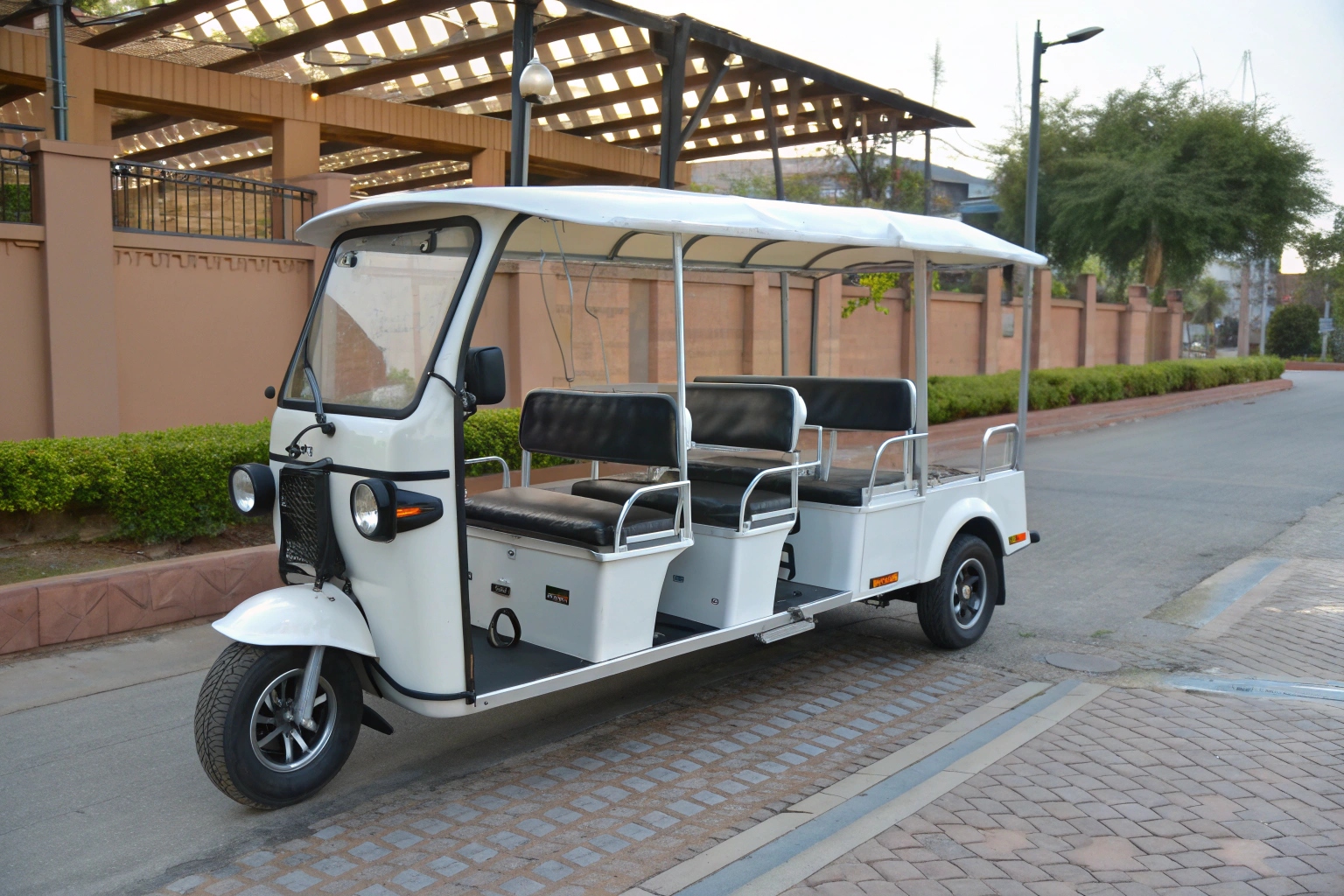
Именно здесь сотрудничество напрямую с такой фабрикой, как наша, становится огромным преимуществом. Мы не просто продаем одну модель; мы создаем решения. Недавно я работал с клиентом, который управляет большим экопарком в Марокко. Им нужно было организовывать туры, а трехместный автомобиль был недостаточно выгоден для поездки. Мы разработали кастомный 6-местный для них. Вот как обычно работают эти варианты:
- Четыре пассажира: We often use a "face-to-face" расположение сидений. Стандартное сиденье для трех человек остается, и мы добавляем сиденье меньшего размера, обращенное назад, на место, где обычно находится место для багажа. Это отлично подходит для разговорных туров.
- От шести до восьми пассажиров: This requires more significant changes. We extend the vehicle's chassis and add two long, side-facing benches in the back. This "shuttle" Стиль чрезвычайно популярен для отелей, курортов и аэропортов. Для клиента на Мальдивах мы построили 8-местный самолет для перевозки гостей и их багажа от причала гидросамолета до их вилл. Поскольку он курсирует по частному ровному низкоскоростному маршруту, мы можем безопасно максимизировать пропускную способность.
Эти модификации превращают тук-тук из простого такси в специализированное средство передвижения.
| Расположение сидений | Количество пассажиров | Лучший вариант использования |
|---|---|---|
| Стандартная скамейка | 3 | Городское Такси, Личный Транспорт |
| Лицом к лицу | 4 | Туры для небольших групп, Семейный трансфер |
| Двойные скамейки | 6-8 | Трансфер до отеля/курорта, Трансфер из аэропорта, Транспорт по кампусу |
Важно помнить, что эти модели большей вместимости обычно предназначены для частного использования в контролируемых условиях, а не для дорог общего пользования, где правила могут ограничивать количество сидячих мест.
Какие ограничения безопасности и комфорта следует учитывать покупателям?
Вы хотите разместить как можно больше пассажиров, чтобы максимизировать доход. Однако перегрузка автомобиля, рассчитанного на меньшее количество людей, представляет собой серьезную угрозу безопасности и может привести к поломкам.
Всегда соблюдайте максимальную грузоподъемность автомобиля, а не только количество сидений. Модели большей грузоподъемности должны иметь усиленную раму, модернизированные тормоза и правильное распределение веса для обеспечения устойчивости. Перегрузка стандартной модели опасна и приводит к аннулированию гарантии.
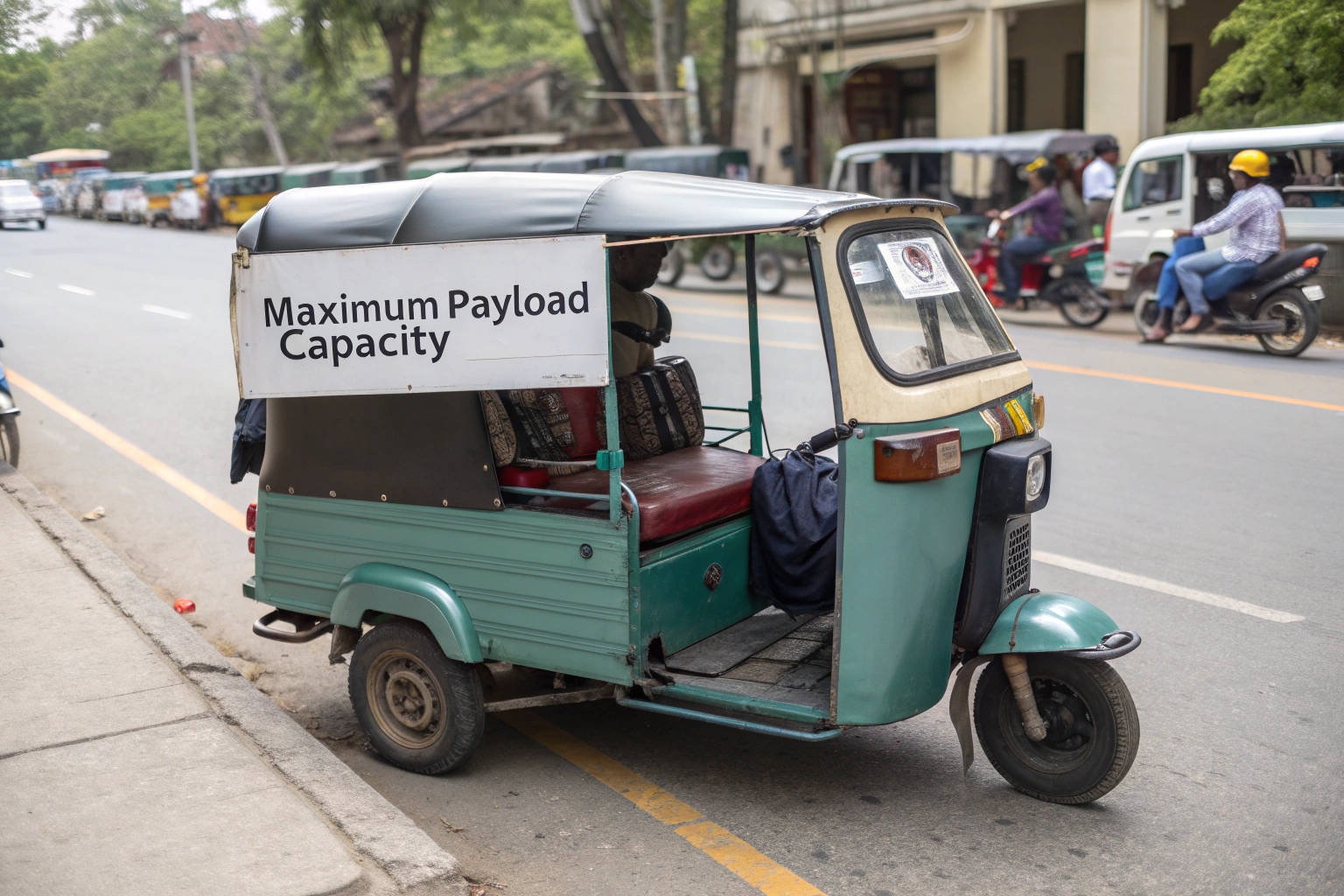
Как производитель, безопасность является моей главной заботой. Простое добавление дополнительных мест к стандартному тук-туку — это путь к катастрофе. Когда клиент просит 6-местный автомобиль, моя инженерная команда сразу все пересчитывает. Вес и центр тяжести автомобиля полностью изменяются. Чтобы сделать это правильно, мы должны обновить ключевые компоненты. Шасси должно быть более прочным, чтобы выдерживать дополнительный вес без прогиба. Тормозная система должна быть более мощной, часто переходя от барабанных тормозов к дисковым.
Вес также напрямую влияет на производительность. Клиент из Кении хотел использовать стандартную 3-местную модель в качестве 5-местного такси в холмистой местности. Пришлось объяснять, что мотор перегреется и аккумулятор разряжается невероятно быстро. По нашим оценкам, сокращение дальности составит более 20 %, что делает его непрактичным для работы в течение всего дня. Что еще более важно, автомобиль будет неустойчивым на уклонах. Вместо этого мы предложили модель с более мощным двигателем и более прочной рамой, рассчитанной на такую нагрузку. Не просто считайте места; посмотрите на официальную грузоподъемность автомобиля. Безопасный предел для стандартного электронного тук-тука составляет около 300-350 кг. Для 6-местного автомобиля эту массу необходимо увеличить до 500 кг и более, что требует принципиально иной конструкции автомобиля.
Какая пассажировместимость лучше всего подходит для приложений B2B?
Вы видите все эти варианты, но не уверены, какой из них принесет максимальную отдачу от инвестиций. Идеальный выбор полностью зависит от того, как вы планируете использовать автомобиль.
Для городских таксопарков наиболее эффективна трехместная модель. Для туристических операторов и гостиничных шаттлов, работающих на частной территории, модели с количеством пассажиров от 4 до 8 пассажиров более выгодны за поездку, что превращает транспорт в ключевую часть обслуживания клиентов.
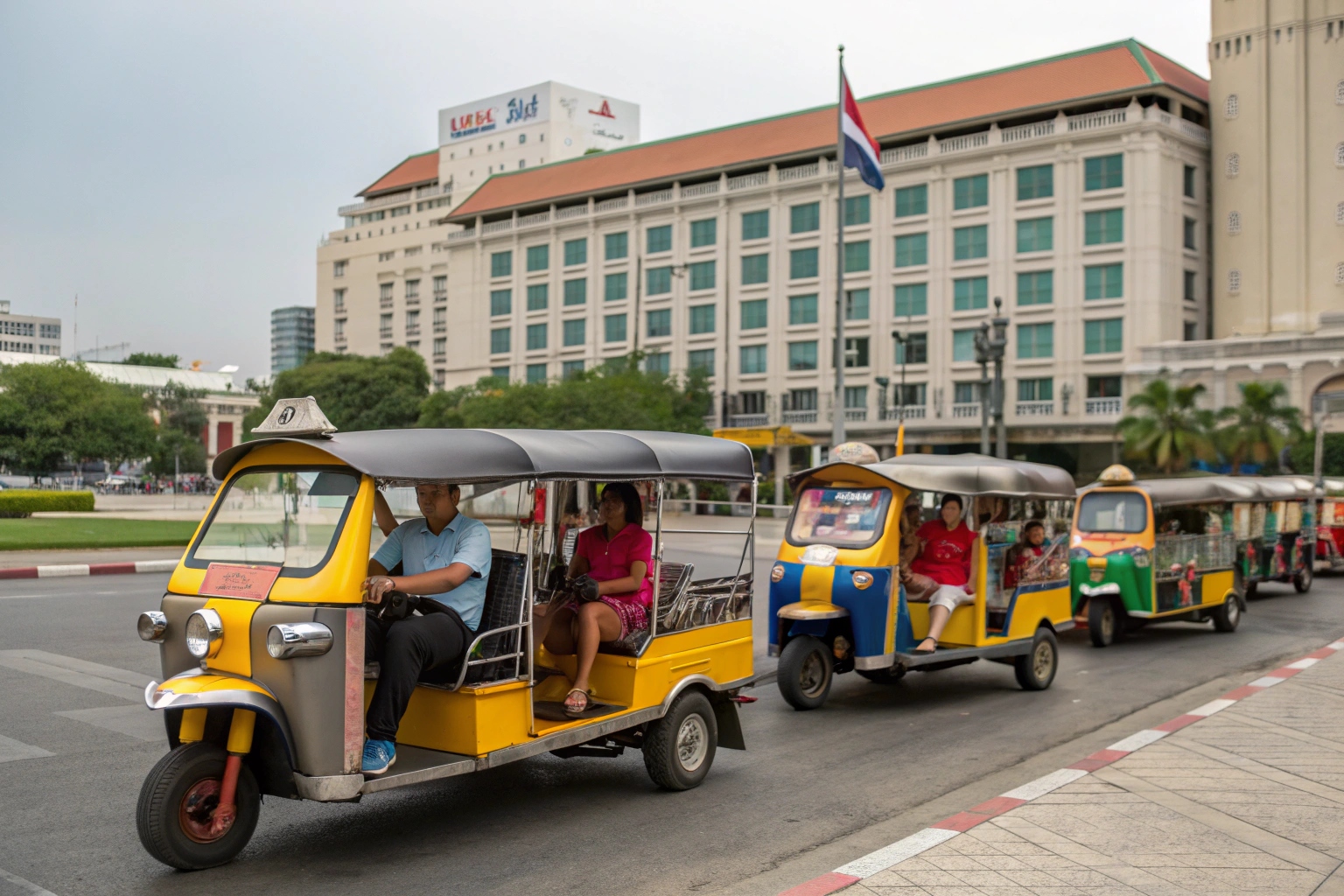
The fun part of my job is matching the right vehicle to a client's business model. There is no single "best" емкость; все дело в приложении. Основываясь на сотнях сделок, я понял, что лучше всего работает для разных типов бизнеса:
| Тип бизнеса | Рекомендуемая емкость | Почему это работает |
|---|---|---|
| Городские такси (например, Перу, Нигерия) | 3 пассажира | Maximizes agility in traffic, keeps costs low for owners, meets local "mototaxi" правила. |
| Туристические достопримечательности (например, Таиланд, Египет) | 4-6 пассажиров | Увеличивает доход за тур. Дизайн под открытым небом и размещение лицом к лицу улучшают впечатления от тура. |
| Отель & Трансфер до курорта (например, ОАЭ, Бали) | 6-8 пассажиров | Идеально подходит для перевозки по фиксированным маршрутам внутри больших объектов. Эффективно перевозит больше гостей за поездку. |
| Государственные зеленые проекты (например, Филиппины) | 3-4 пассажира | Балансирует потребности общественного транспорта со строгими правилами безопасности и правилами регистрации транспортных средств. |
| Транспорт кампуса/индустриального парка | 6-8 пассажиров | Высокая вместимость идеально подходит для перемещения сотрудников или студентов короткими и интенсивными кругами по частным дорогам. |
Я всегда прошу своих B2B-клиентов сначала определить свой основной маршрут и клиента. Это короткая фиксированная линия или динамичная общегородская услуга? Вы продаете поездку или впечатления? Ответ на эти вопросы почти всегда указывает прямо вправо. пассажировместимость. Не забудьте ознакомиться с местными правилами, поскольку иногда они могут оказаться решающим фактором, особенно при использовании на дорогах общего пользования.
Заключение
Правильная вместимость электрического тук-тука зависит от вашего бизнеса. Стандартные 3-местные автомобили предназначены для городских такси, а специальные 4-8-местные автомобили идеально подходят для экскурсий и частных маршрутных такси.

